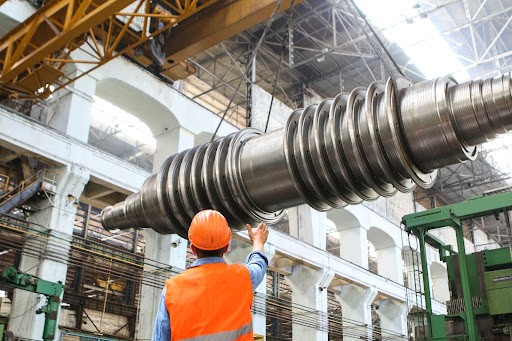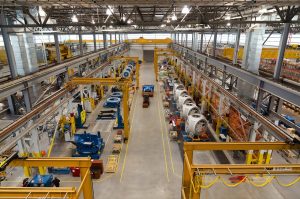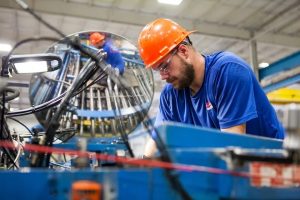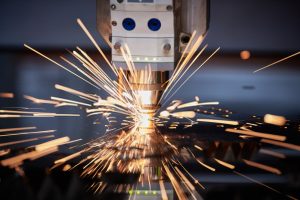
Efficient operations are beneficial to any business. It makes no difference whether your company is focused on manufacturing or providing services. The simple fact is that increased process efficiency always offers many advantages over doing business the old-fashioned way.
On a broad scale, increasing manufacturing efficiency can help reduce costs, increase throughput, and reduce environmental impact. These general advantages lead to additional benefits down the road, ranging from increased sales and quality to a better corporate image.
Table of Contents
Why Do You Need To Improve Manufacturing Processes?
Before you embark on overhauling your processes, you first need to understand why it is essential to do so and the benefits of making the right changes.
When inefficient ways of working are eliminated, productivity increases at the individual and organizational levels, resulting in increased profits. Conduct regular and thorough analyses of your processes. You’ll learn to identify and resolve bottlenecks more quickly, predict future problems, and streamline workflows as a result of your efforts.
Furthermore, you will be able to get your products to market much more quickly!
And it may even be a catalyst for improving product quality too. The detailed testing results have implications for other important product characteristics, such as performance, life span, usability, and safety.
Combining all of these advantages increases the likelihood that you will achieve higher levels of customer satisfaction and loyalty, as well as higher levels of turnover and profitability. After all, customers who are pleased with their purchases are more likely to purchase again.
However, inefficient manufacturing processes are detrimental to employee morale because there is nothing more frustrating and demoralizing than having your hard work undone by clunky, inefficient workflows.
Improvements in production processes and the adoption of above-average working standards and operating procedures can often give your company a competitive advantage and help it stand out from the competition.
7 Ways You Can Improve Manufacturing Processes
Modernize Processes

It’s time to evaluate whether it’s necessary to modernize or improve your current processes and technologies after you’ve mapped out your existing workflows. Could you make some of your operations more automated? Are there any ways to use new software to improve your planning, inventory control, or monitoring? Is it possible for you to replace or upgrade your machinery and equipment?
Consider the ‘total cost of ownership (TCO) when considering whether or not to adopt new technologies or equipment. Would making a change lower your total cost of ownership?
Repairs
Preventive maintenance is performing maintenance tasks on a tool based on the tool’s available wear schedule to keep it in good working order. The goal is to perform maintenance before it becomes necessary, but not so frequently that it hinders other tasks. Determine the appropriate schedule by consulting with tool manufacturers or taking into account the time between previous failures.
Invest in high-quality tools and equipment from reliable suppliers such as Royal Power Solutions to ensure the repairs are carried out correctly with the right parts for the job.
Engage Employees
If you are experiencing downtime in your process, look to your employees for solutions. It stands to reason that the person in charge of carrying out a job might suggest ways to make the process more efficient. On the other hand, executives and managerial staff, who are accustomed to looking at the big picture, can easily overlook smaller opportunities for improvement. Open communication channels allow employees to effectively communicate up the chain whenever they have suggestions, comments, or complaints by enabling them to express themselves.
Staff Training

When you optimize your manufacturing processes, don’t forget to train your employees on the new procedures. The better they are at operating and maintaining your machinery and equipment, the less likely it is that production will come to a halt unexpectedly and unexpectedly.
Provide your employees with the opportunity to learn new skills by scheduling training sessions whenever a new piece of equipment is installed. Keep track of whether or not you need to take any refresher or retraining courses.
Focus on Inventory
Striking a balance between having too little and too much inventory can be a little bit like walking a tightrope. You need always to be aware of precisely what you have in stock and where it is located. Ideally, you will want to use modern software that keeps track of inventory levels, predicts material requirements, and notifies you when you have too much or too little of a particular item.
Continuous Improvement

Continuous improvement, also known as Kaizen, is one of the tenets of the Lean manufacturing methodology. In contrast to a large-scale transformation that takes place all at once, the goal is to improve productivity, quality, costs, and turnaround times incrementally and iteratively.
Furthermore, continuous improvement implies that process optimization is a never-ending process that relies on employees to make iterative changes and improvements to their work.
To achieve this, it is critical to provide training and coaching. On-the-job training, for example, is an excellent example of this.
There are three main components of continuous improvement which are;
- Identify and summarize the problems
- Resolve the problems identified using the suggestions gathered
- Evaluate how effective any improvements are
Consider Cellular Manufacturing
Cellular manufacturing, which is taken directly from the Lean Manufacturing playbook, increases efficiency by similar grouping processes. The methodology entails dividing workspaces into cells and assigning a standardized set of tasks to each cell within the workspace. While the machines (and employees) in each cell may perform a wide range of functions, allowing them to concentrate on a single task reduces downtime for functions such as re-calibration and tooling installation while simultaneously improving the consistency and quality of the final product.
Cellular manufacturing also necessitates the breakdown of your overall manufacturing process into a series of discrete steps, which allows you to identify areas where you can cut costs by eliminating waste. This makes quantifying each step of the process significantly more straightforward.
Improvements in manufacturing can be constantly evaluated to help you monitor performance and workflows that will help you to reduce inefficiencies.